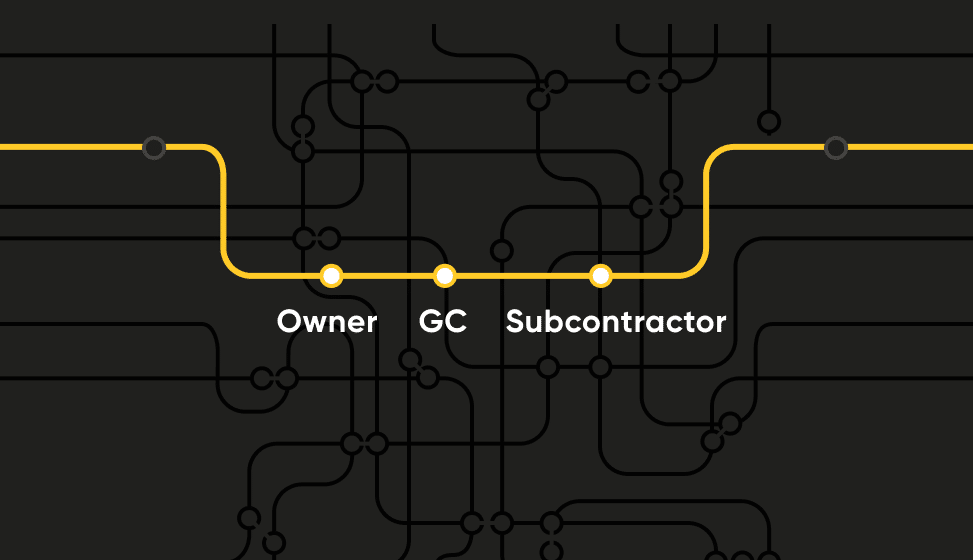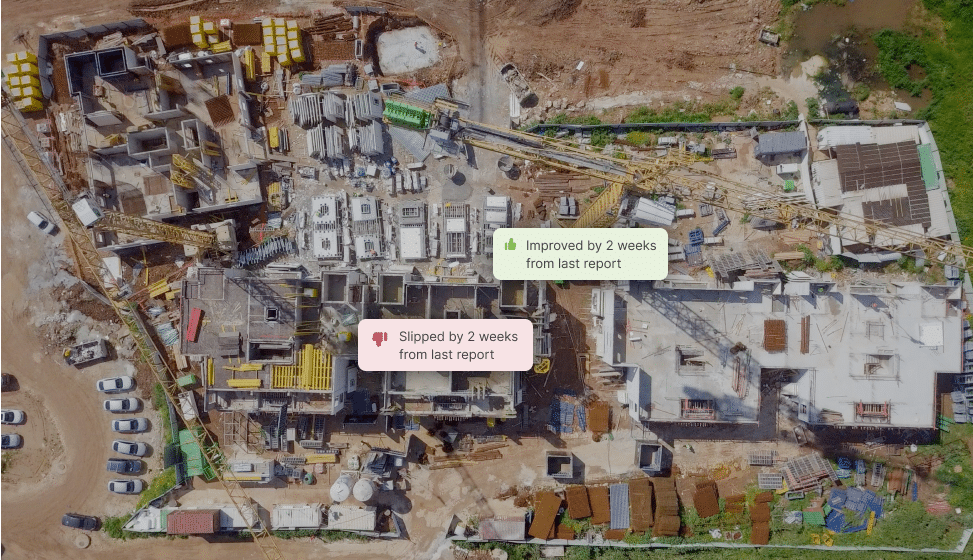Insights from the field Real-life applications of Performance-Driven Construction Management

When delivering a construction project, budget and schedule overruns are often seen as inevitable—an acceptable norm. Numerous reports, including McKinsey's 2017 study and our own Buildots study, have consistently pointed out deep-seated and all-too-common underlying inefficiencies in traditional construction management.
The Performance Improvement Cycle
Buildots’ Performance-Driven Construction Management (PDCM) framework was developed to address these named, hidden inefficiencies, shifting the industry's focus from lagging indicators like schedules and budgets to the measurable nuances of process execution.
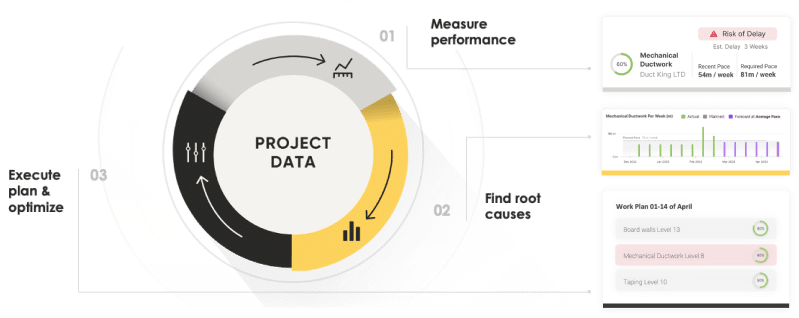
PDCM’s core steps are:
- Measure: Track performance indicators that reveal your project’s key challenges.
- Analyze: Assess data to chart the best course forward, addressing gaps in a timely manner.
- Optimize: Adapt your execution based on these insights for continuous improvement.
More than just a theory
PDCM isn't just a theoretical concept; it's a practical, results-driven framework developed in response to industry needs, that has been refined to reflect insights from industry leaders and their use of Buildots.
To apply PDCM in practice, these construction project teams utilize Buildots’ AI progress tracking platform. The platform automatically collects objective site data and provides them with predictive forecasting, enabling proactive problem-solving – a core tenet of PDCM.
Let's explore how the following industry leaders have been successfully adopting and implementing this framework.
1. Performance-driven work planning: how NCC used PDCM
Success starts with a solid plan, and at NCC, a leading Nordic construction firm, the focus was on creating realistic, manageable weekly plans. With multiple subcontractors working on vast amounts of individual tasks, building achievable short-term plans and knowing that teams are sticking to them is no small feat.
While working on 4 projects spanning 68,500 sqm (737,300 sqft), NCC used Buildots’ performance-data to track each subcontractor’s completion rates against original plans, for example identifying issues such as insufficient manpower in their HVAC teams. By increasing labor resources and adjusting work plans accordingly, NCC not only held their subcontractors accountable, but also got them back in line with the overall project schedule.
2. Performance-driven delay mitigation: how IHP used PDCM
Not all delays can be avoided; yet, some can be anticipated and managed. Delay mitigation was a key factor for IHP, a joint venture between Sir Robert McAlpine and Vinci working on a 24,000 sqm (258,300 sqft) extension of the Royal Bournemouth Hospital.
Measuring the pace of all active subcontractors on a weekly basis and comparing those data sets to the required pace for matching the planned schedule, IHP found that the HVAC and plumbing subcontractors were behind schedule. Analyzing underlying causes and finding out about this early on, IHP moved the affected subcontractors to a different area, adjusted task sequencing, and labor distribution. Working this way, IHP not only increased production pace, but proactively reduced the projected delay and recovered lost time.
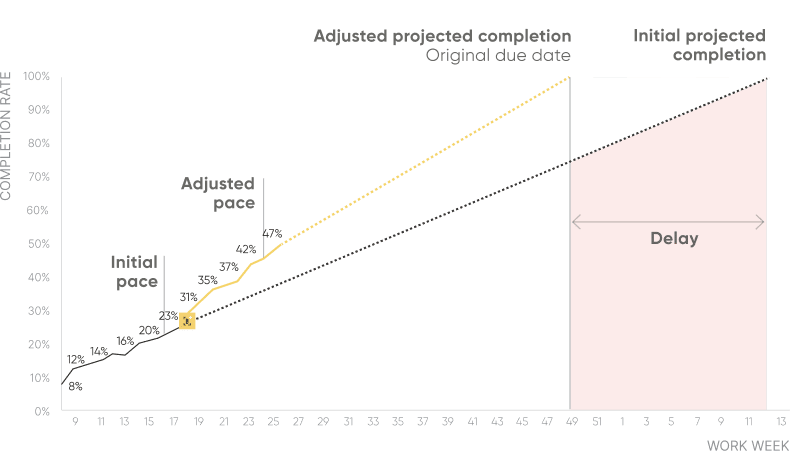
3.Performance-driven completion validation: how a US-based contractor used PDCM
Efficiency in task completion is critical for maintaining project momentum. A prominent U.S. contractor tackled completion gaps during the construction of a large high-rise in Seattle by identifying recurring errors, such as improper pipe insulation installations.
By analyzing this data, project managers were able to trace back the actual causes of the error, determine how far-reaching it was, and how to prevent it from moving forward. This allowed for avoiding return visits on 36 future floors, saving 3.5 weeks of projected delays and demonstrating PDCM’s potential for substantial savings in both time and resources across the board.
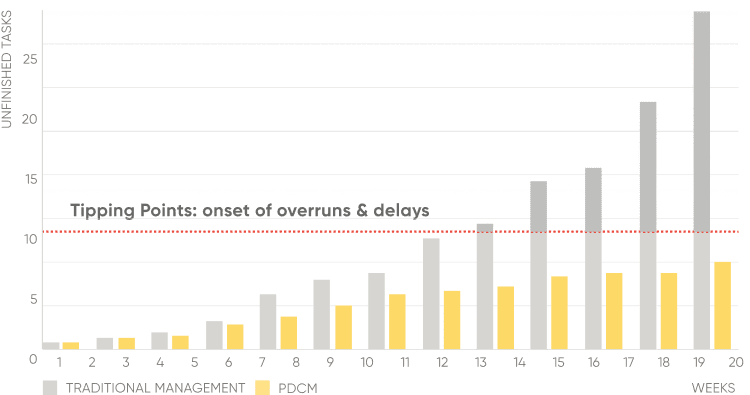
No time to waste: Adopting Performance-Driven Construction Management
The journey towards Performance-Driven Construction Management (PDCM), as seen in this article, highlights its tangible real-world impact on major general contractors. These three industry leaders have realized substantial benefits through measuring and optimizing key performance metrics of their operations. Their results provide strong proof of PDCM's practical benefits – enhancing efficiency and driving significant time and cost savings.
Uncover the keys to proactive construction management and explore more applications of PDCM in construction with our whitepaper. Download now to see how it refines project management practices.



